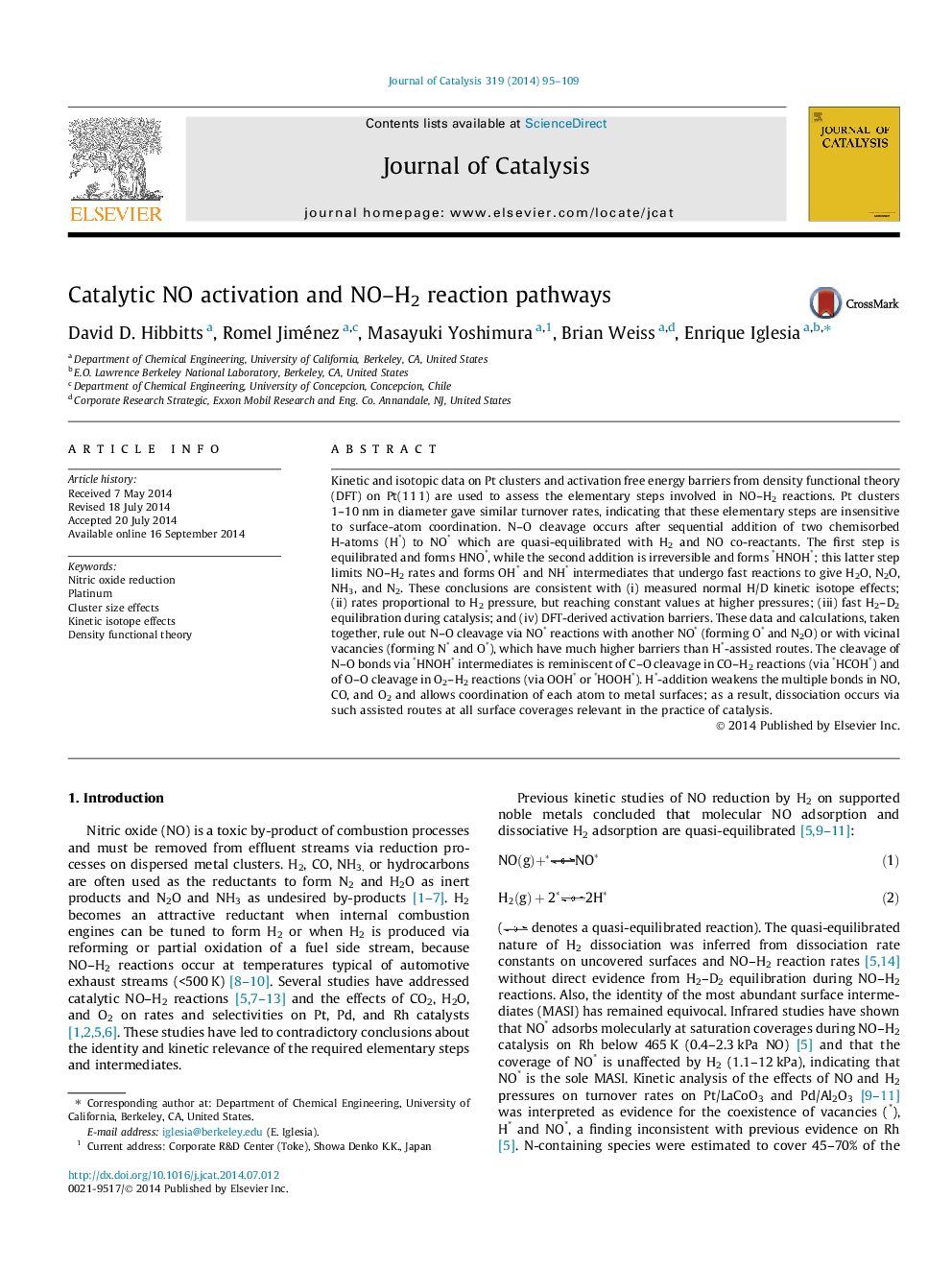| کد مقاله | کد نشریه | سال انتشار | مقاله انگلیسی | نسخه تمام متن |
|---|---|---|---|---|
| 60998 | 47558 | 2014 | 15 صفحه PDF | دانلود رایگان |

• NO–H2 turnover rates depend weakly on Pt cluster size (1.5–10 nm).
• HD formation rates in NO–H2–D2 reactions show quasi-equilibrated H2 dissociation.
• Isotopic effects are consistent with kinetically-relevant *HNOH* formation.
• Theory indicates that N–O cleaves only after H*-additions to form NOH* and *HNOH*.
Kinetic and isotopic data on Pt clusters and activation free energy barriers from density functional theory (DFT) on Pt(1 1 1) are used to assess the elementary steps involved in NO–H2 reactions. Pt clusters 1–10 nm in diameter gave similar turnover rates, indicating that these elementary steps are insensitive to surface-atom coordination. N–O cleavage occurs after sequential addition of two chemisorbed H-atoms (H*) to NO* which are quasi-equilibrated with H2 and NO co-reactants. The first step is equilibrated and forms HNO*, while the second addition is irreversible and forms *HNOH*; this latter step limits NO–H2 rates and forms OH* and NH* intermediates that undergo fast reactions to give H2O, N2O, NH3, and N2. These conclusions are consistent with (i) measured normal H/D kinetic isotope effects; (ii) rates proportional to H2 pressure, but reaching constant values at higher pressures; (iii) fast H2–D2 equilibration during catalysis; and (iv) DFT-derived activation barriers. These data and calculations, taken together, rule out N–O cleavage via NO* reactions with another NO* (forming O* and N2O) or with vicinal vacancies (forming N* and O*), which have much higher barriers than H*-assisted routes. The cleavage of N–O bonds via *HNOH* intermediates is reminiscent of C–O cleavage in CO–H2 reactions (via *HCOH*) and of O–O cleavage in O2–H2 reactions (via OOH* or *HOOH*). H*-addition weakens the multiple bonds in NO, CO, and O2 and allows coordination of each atom to metal surfaces; as a result, dissociation occurs via such assisted routes at all surface coverages relevant in the practice of catalysis.
Figure optionsDownload high-quality image (204 K)Download as PowerPoint slide
Journal: Journal of Catalysis - Volume 319, November 2014, Pages 95–109